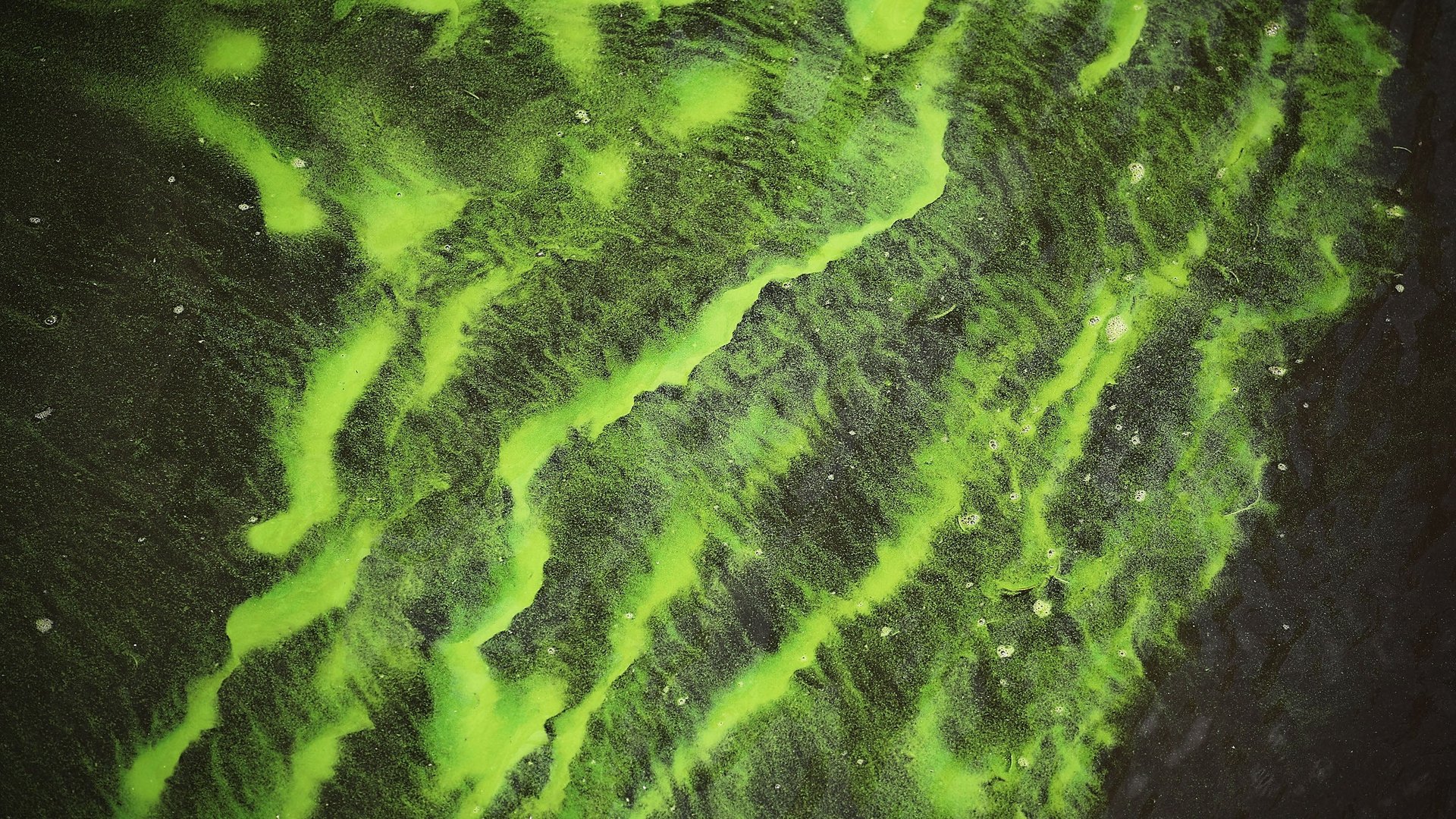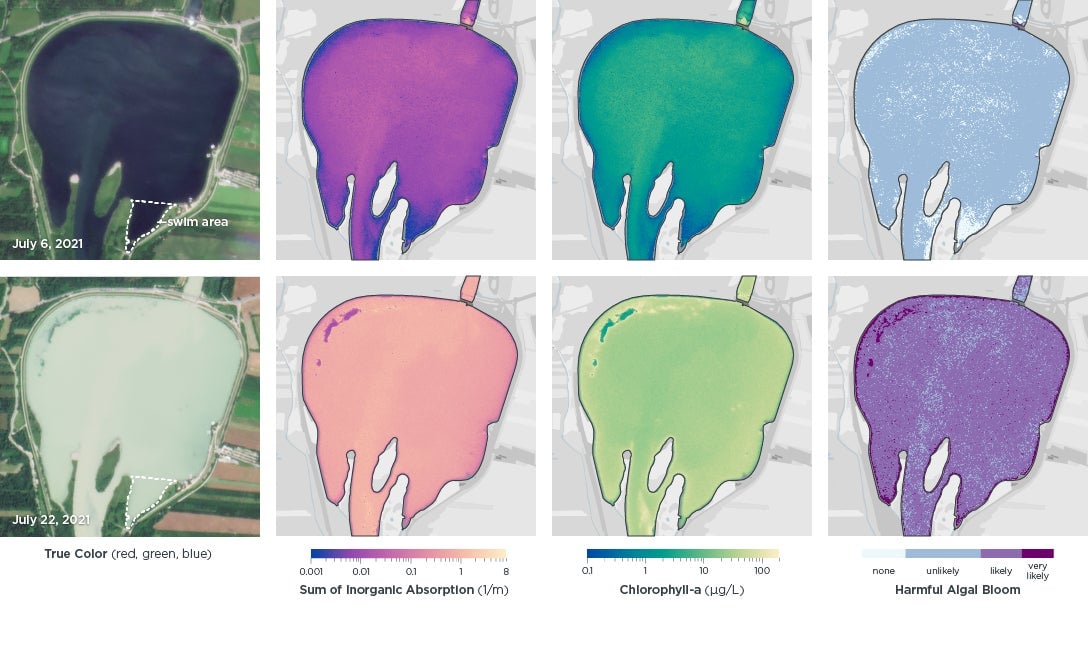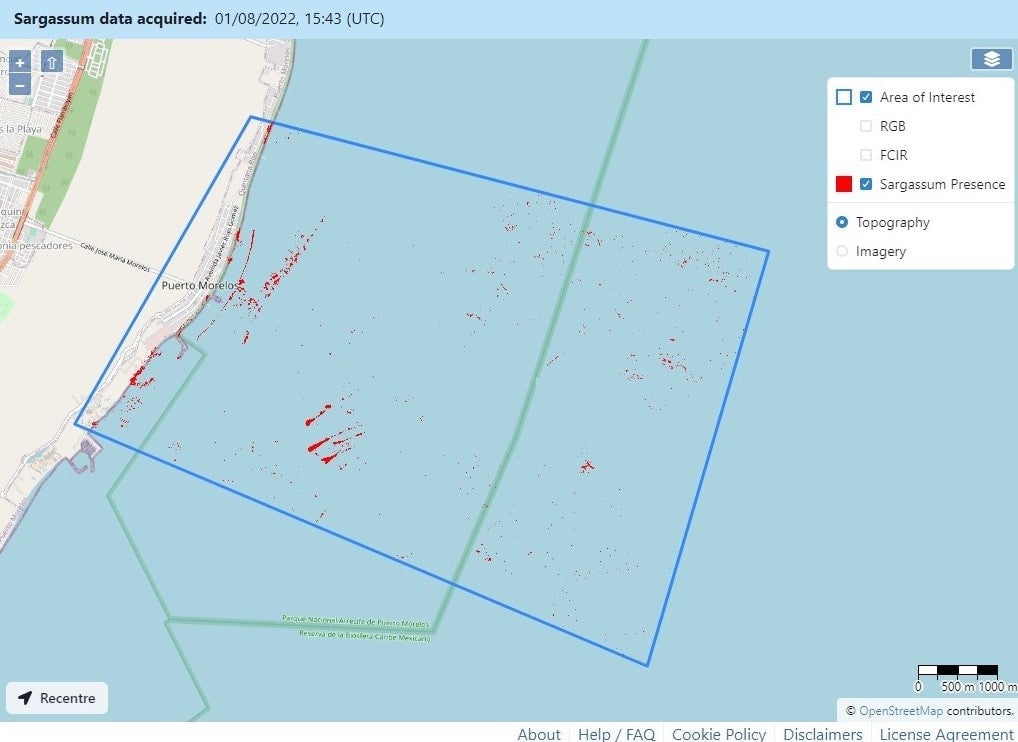Satellites can spot toxic algae before it kills your dog
Driven by climate change, algae blooms are a growing problem for water quality

Karin Schenk wishes she could have saved the dog.
A geographer specializing in remote sensing, Schenk works for EOMAP, a company spun out of Germany’s space agency that uses satellite data to track water quality. For a decade, she’s used data collected by orbiting satellites to peer just under the surface of bodies of water, looking for signs of life.
The life she seeks can be deadly: Microscopic, aquatic plants and animals that make up blooms of colored algae. In recent decades, a combination of fertilizer and sewage run-off, increased carbon dioxide in the atmosphere, and rising temperatures driven by climate change have led these blooms to appear more frequently. Worse, they can be toxic.
In the recent past, Schenk has relied on government-built satellites like the US’s Landsat and Europe’s Sentinel to provide medium-resolution imagery of a place on earth every eight days or so. Now, though, she has access to daily, high-resolution imagery from private companies.
Testing out her company’s products on Lake Mandicho in Germany, she found evidence of a growing algal bloom. But while waiting for actual samples to be tested, a dog drank some water at a beach, became ill, and died.
“The authorities shut down the bathing site, but it was one day too late,” she told Quartz.
The science behind the hunt for toxic algae
EOMAP works with local water agencies and municipalities around the world to watch over beaches and reservoirs. Before satellite monitoring, water quality could only be determined by sampling and observation. That made tracking potentially toxic algae time-consuming and limited it to specific areas. Detecting it using sensors in space gives a much more comprehensive and timely view of the situation.
To find these blooms, satellites detect reflected electromagnetic energy that the human eye cannot see. It’s particularly tricky in the case of water, which reflects much of the light that satellites would like to detect. Researchers examine bands of green and red light that allow them to detect chlorophyll, the chemical plants use for photosynthesis. In the past, data from these bands of light were only accessible through government satellites, but now more advanced private satellites are adding them.

Planet, a space data company in the US, began launching satellites that capture eight bands of spectral data in 2021. Now, besides the optical spectrum of red, blue, and green and near-infrared, Planet users can get data from bands known as “red edge” and “coastal blue,” as well as yellow and green bands without fun names. Jim Thomason, Planet’s VP of product, says customers can use this data at resolutions of 3 meters per pixel, compared to Landsat’s 30 meters, and see it on a daily basis if the clouds are cooperating.
Schenk says this “temporal resolution,” a term of art for how often the imagery can be collected, combined with the finer spectrum detail, allows EOMAP to create digital products that can simply alert water regulators to dangerous conditions far more quickly than today. Currently, the company monitors water around the world, even in California, where Lake Elisnore, a popular destination for recreation, is now suffering from algal blooms.
The future of spotting water monitoring
Algae blooms aren’t the only aquatic phenomenon causing problems. In the Atlantic ocean, blooms of Sargassum, a floating seaweed, have become more common and are now appearing throughout the Caribbean. Scientists suspect that this is related global warming’s affect on ocean temperatures and currents. The result can be piles of seaweed on beaches, which can hurt the tourism industry, produce nasty smells and even block boat traffic in harbors.
SargAssure, a project backed by the UK space agency in collaboration with universities in the UK and Mexico, uses Planet’s data to create a dashboard that municipalities or local businesses can use to track sargassum. Geoff Smith, an earth observation consultant, says the company’s rapid data allows users to deploy measures from floating booms to clean-up crews. Some companies are even trying to utilize the seaweed as a raw material.

While Smith and Schenk applaud Planet’s additional bands, both are eagerly awaiting an even more fruitful source of data, called hyperspectral sensing. As the name implies, such sensors gather data across an even broader range of the electromagnetic spectrum, allowing for more information about what is detected. Planet is planning to deploy such sensors in the future, while start-up Pixxel launched its first hyperspectral sensor into space earlier this year and another firm, HyspecIQ, is planning its own satellites in 2023.